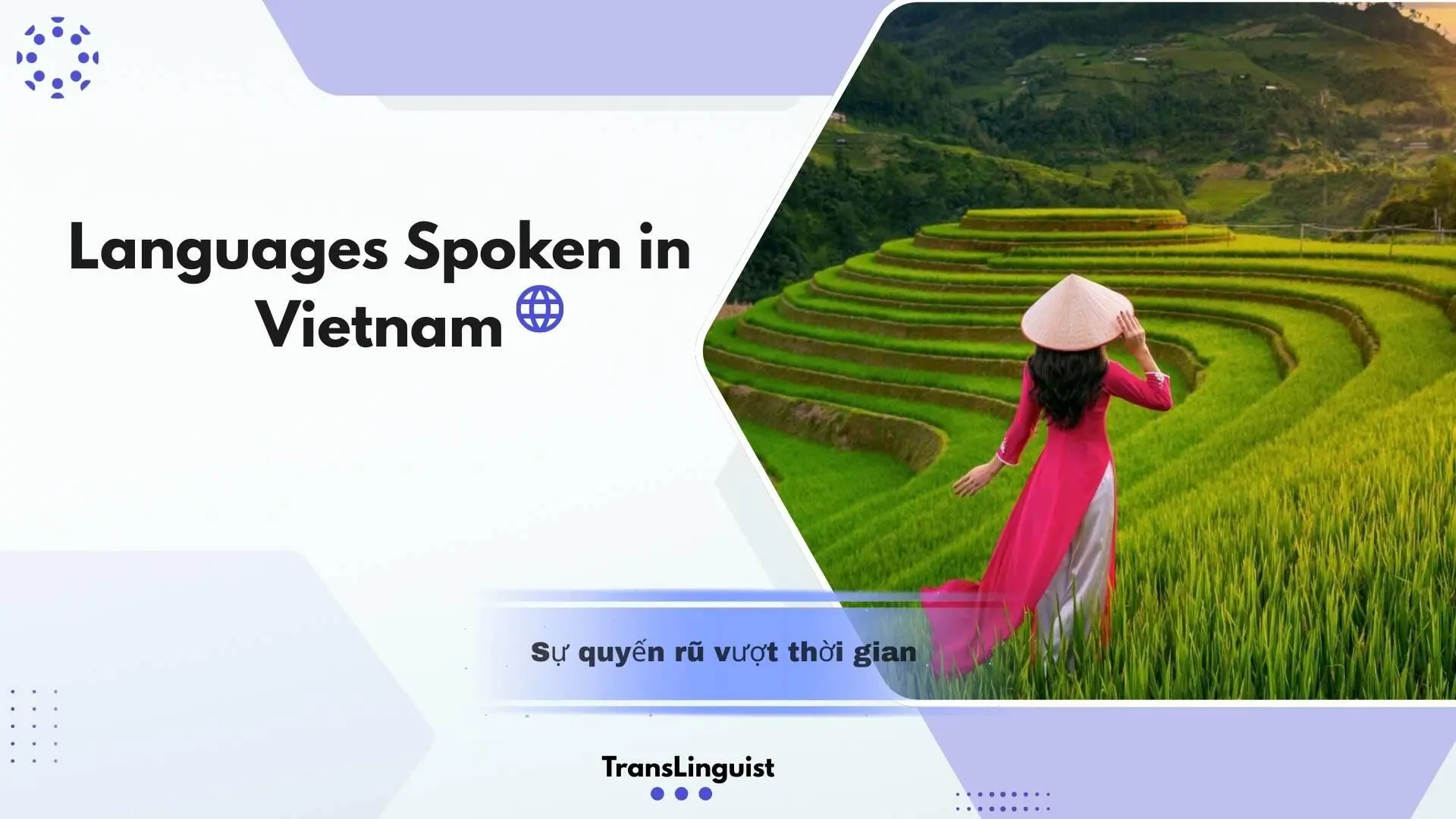Vietnam is a meeting place of voices. In this guide to Languages Spoken in Vietnam, we’ll sketch the official language, regional varieties, and the living role of minority and foreign languages across work, school, and daily life. You’ll see how policy, migration, and culture intersect to shape communication. By the end, you’ll have a practical view of the Languages Spoken in Vietnam to plan outreach, hiring, education, and customer experience with confidence.
What are the top 3 languages spoken in Vietnam?
Three languages tend to surface first when you look at public life, travel, and commerce: Vietnamese anchors administration, schooling, and national media. English serves as the most common foreign language in cities, key industries, and tourism. Chinese remains relevant in heritage communities and cross-border trade, especially in the north and within Chinese-Vietnamese networks. Together, they map the core of daily interaction while leaving space for dozens of community tongues that carry history and identity.
Vietnamese: The National Language
Vietnamese underpins the country’s public sphere—the language of courts, classrooms, and the nightly news, and the default for forms, signs, and national coordination. If you’re building training or scaling support, start with Vietnamese for clarity and trust.
Origins and Language Family
Linguists group Vietnamese in the Austroasiatic family, under the Vietic branch. Over time, it picked up words from Chinese and then French, but its grammar and tones stayed its own. Thanks to the Latin quốc ngữ script, reading is widespread—and learning the sounds and tone marks is more straightforward.
Regional Dialects
Listeners often recognize three major reference accents. Northern speech (centered on Hà Nội) is widely used for official broadcasting and is often taught as the standard. In the center—around Huế and the coast—you’ll hear tones and words that can stump outsiders. Down south, in HCMC and the Mekong, the rhythm and vocab shift again. The upside: everyone reads the same script, so printed materials still land everywhere.
Minority Languages: Preserving Vietnam’s Cultural Mosaic
Beyond the national standard, Vietnam recognizes a wide set of ethnic communities, and many maintain their own languages alongside Vietnamese. These tongues are not museum pieces; they’re working languages for family life, craft, ritual, and local commerce. Where bilingual classrooms, community radio, and literacy programs exist, language vitality tends to be stronger. For organizations engaging outside major cities, asking which local language supports trust can make or break the adoption of services and programs.
Tày and Nùng (Tai-Kadai Languages)
Up north, Tày and Nùng families speak Tai–Kadai languages close to those across Laos and Thailand. People switch—Tày or Nùng at home and in the market, Vietnamese for school and paperwork. If you’re running programs, add local audio or community interpreters to your Vietnamese materials to boost turnout for health, loans, and farming support.
Hmong (Hmong-Mien Language Family)
Hmong highland communities keep language alive through songs, clan lore, and seasonal rituals. Many youth use Vietnamese for study and jobs, yet messages land faster when outreach opens in Hmong—particularly for health, schooling, and civic notices.
Khmer (Austroasiatic Language Family)
Down in the Mekong Delta, Khmer families use a language closely tied to Cambodian Khmer. Temples, festival days, and community classes keep reading skills and ceremonial texts alive. If you serve border-trade hubs or delta agriculture, Khmer support (alongside Vietnamese) helps messages move without getting stuck at family gatekeepers.
Cham (Austronesian Language Family)
Cham communities along the south-central coast maintain one of mainland Southeast Asia’s oldest recorded Austronesian languages. Eastern and Western Cham varieties exist today, with script traditions still visible in religious and cultural life. For cultural heritage, tourism, and coastal development projects, basic Cham visibility—terminology, signage, interpreters—signals respect and improves participation.
Foreign Languages: The Influence of Globalization
Vietnam’s global connections shape which non-native languages matter in specific sectors. Education policy and industry needs have made one language especially visible, with a few others persisting through history and trade.
English
Due to Vietnam’s growing integration into the global economy, English has become the most popular foreign language in the country. It is widely taught in schools and is increasingly used in business, especially in urban areas.
French
As a remnant of French colonialism, French was once the dominant foreign language. Although its influence has declined, it is still spoken by older generations and is taught in certain schools as a second language.
Chinese and Russian
Chinese serves both as a heritage language and a practical tool in specific trade corridors and markets. Russian persists in niches shaped by earlier academic and technical exchanges. If your operations touch logistics, energy, or specialized engineering, you may still encounter Russian documentation or alumni networks.

The Importance of Preserving Linguistic Diversity
Start in the home language, then bridge to Vietnamese and beyond: you get a clearer understanding, fewer attendance dips, and skills that stick. Community media, teacher training, and bilingual classrooms help minority languages thrive while keeping national coordination intact. For service providers, that same principle holds—start where people are, then layer Vietnamese and English as needed.
How Language Reflects Vietnam’s Cultural History
Vietnam’s language map is a timeline you can hear. The national role of the Vietnamese reflects state formation and modern schooling. Chinese loanwords and dynastic administration left a deep imprint; French introduced the compulsory Latin-based script and reshaped printed communication. Globalization brought English into boardrooms and classrooms. Meanwhile, Tày, Nùng, Hmong, Khmer, Cham, and others carry local memory forward. In practice, one district may need three approaches: Vietnamese for paperwork, English glossaries for a supplier, and community interpreters for inclusive outreach.
Conclusion
Vietnam’s language landscape is both efficient and expressive. Vietnamese institutions give a clear operating system. English opens doors in export-oriented sectors. Community languages keep knowledge, networks, and trust alive at the edges of maps and the center of family life. If your goal is effective engagement, match your channel to your audience: Vietnamese for official clarity, English where markets demand it, and community language support where relationships matter most. For teams planning outreach across provinces, that’s how the Languages Spoken in Vietnam becomes a strategy, not just a list.
Get it right the first time: live interpreting, multilingual captions/subtitles, sign language, plus precise Speech AI from TransLinguist. Share your target and schedule, and we’ll craft a workflow that meets budget and scales as you grow.
FAQs
Is Vietnamese tonal, and does tone vary by region?
Vietnamese has tones, and the tones aren’t the same everywhere. That’s why people from Hà Nội, Huế, and Ho Chi Minh City sound different.
Do most minority language speakers also use Vietnamese?
Bilingualism is common. People often use a community language at home and Vietnamese for school, services, and paperwork.
Which foreign language is most useful for business in cities?
English is the first choice in hospitality, tech, and export-oriented roles. Dual-language materials and captions help mixed-proficiency teams move faster.
Where is Cham still spoken?
Cham communities are concentrated along the south-central coast, with related communities in Cambodia. Eastern and Western varieties are both in use.



